Have you ever noticed that the web pages you browse on Google are just the tip of the iceberg? Of course, a website owner can guess there are many websites Google does not index. However, you can be sure that this number is much higher. Google bots travel to this invisible part of the iceberg every day. It crawls web pages that it hasn’t indexed before. Then, it indexes the appropriate ones. Thus, users have the opportunity to access new web pages. However, you can guess that it is not possible for Google bots to crawl billions of web pages. The density caused by this situation renders the system inoperable. Technically speaking, this results in an enormous amount of bandwidth consumed online. Consequently, Google’s performance will slow down more. It is not something Google would want at all. So, that is where Google Crawl Budget comes into play.
What Is Google Crawl Budget
To prevent the crawl density we’ve mentioned above, it determines a certain amount of crawl budget for each website. Therefore, this budget determines how many times Googlebot crawls the website it will index. Briefly, we can say that the crawl budget refers to how many websites Googlebot will crawl in a certain time period. So, what is the Google bot? What exactly is the task of a Google bot?
We can simply define a Googlebot as an automatic proxy. It is in charge of crawling websites as it searches for new web pages to index. In fact, it is a digital program that surfs the internet like every user. Understanding Googlebot will benefit you both in terms of crawl budgets and SEO.
Well, why do you think search engines, especially Google, assign crawl budgets to websites? The main reason for this is the limited resources of search engines. They have to divide these resources fairly to crawl billions of new websites. The solution that search engines need in this regard is the crawl budget.

Why Is Crawl Budget Important for SEO?
If a website has an insufficient crawl budget, Googlebot will not crawl new pages on that website. Naturally, Google will not index a website that it has not crawled. For this reason, a website should take care not to have a number of pages that will exceed the crawl budget. However, let us remind you that this is still a low possibility. Because Google is quite good at crawling websites and indexing new websites. In fact, it will not be wrong to say that it is the best among search engines. But still, let’s talk about what website owners should pay attention to when it comes to crawling budgets. Thus, you can act more consciously about crawl budget optimization.
The first of these issues is the presence of a large number of redirects on the website. Excessive redirects on a website or an excessively long redirect chain consume the crawl budget. Another situation that consumes the crawl budget is managing a large site. For example, if you have a website with more than 5,000 pages, Googlebot may have trouble finding all of these web pages. E-commerce sites are the best example of this situation. Another situation that quickly consumes the crawl budget is to add hundreds of pages to the website at once. Website owners often encounter this situation when they add a new section of hundreds of pages at a time to their website. But, in doing so, you have to make sure you have enough crawl budget for Google to index them all at once.
How Does Google Determine The Crawl Budget?
Let’s share the formula of the crawl budget determined by Google for websites without waiting for you. Later, we will continue to talk about the dynamics that have an impact on this issue. The basic formula that Google uses to determine the crawl budget is as follows:
Crawl Budget = Crawl Rate + Crawl Demand
As you can see, Google determines the crawl budget based on the crawl demand. In this context, there are a few issues that we need to examine. First of all, Google is quite determined to always provide its users with resources with the most up-to-date content. That is why URLs with trending content have a higher crawl demand. In this context, we can say that the scanning demands of non-trend topics or sources with outdated content will be less. Another situation where crawling demand is increasing is when websites migrate. Because in such cases, Google will want to quickly update the index with the new URLs of your website.
The crawl budgets that Google sets for websites are not same always. This budget, far from being fixed, is highly variable. There are many factors affecting this issue. Knowing these dynamics will help you to efficiently use the crawl budget that Google has set for your website. Let’s take a closer look at this now.
Tips to Use Google Crawl Budget Efficiently
Use Internal Links
Googlebot also gives importance to relevant internal and external links while crawling. If your web page is an external link on another web page Googlebot has crawled before, that will get its attention. In this case, Googlebot will be aware of the existence of your web page and will think it is a high authority page. As a result, Googlebot will be more likely to crawl it. The more websites that your web page is included in as an external source, the more likely Googlebot will notice it soon.
That also applies to internal links. Sometimes, Googlebot may not recognize all the pages included while crawling a website. That usually happens to websites that have a large number of web pages. In this case, you may try to add these web pages as internal links to other pages. Thus, you can make Googlebot notice them as it crawls your website. As a solution, you may consider adding your new web pages as internal links to each other. That maximizes the probability of Googlebot noticing one of them as it crawls the other.
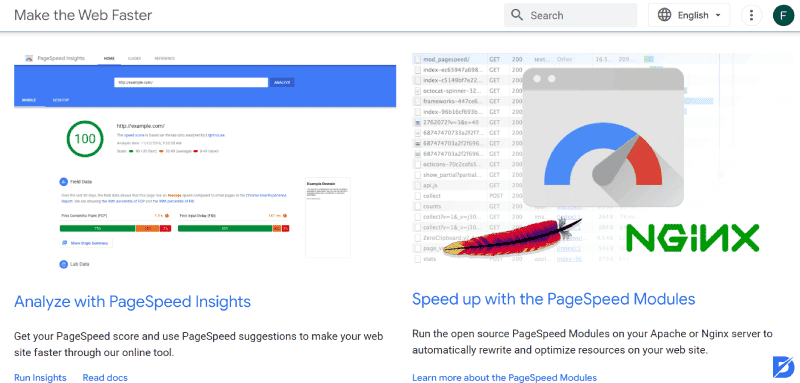
Optimize Website Speed
Everyone knows how meticulous Google is about user experience. The speed of a website is one of the most important factors affecting the user experience, which is so important for Google. As a matter of fact, Google has clear evidence of how impatient users are about it. According to their experiments, 4 out of 5 users immediately leave websites that do not open within 3 seconds. However, website speed means much more than user experience. The speed of a website is also an extremely important factor for Googlebot’s crawling speed. The faster a website is, the faster Googlebot can crawl it. As a result, it can crawl faster and index your website more quickly.
The main topic of our article is built around why the crawl budget is limited. When you look at it from this perspective, you can understand how important it is for Googlebot to crawl a website faster. Because Google’s resources are limited. For this reason, Googlebot’s time is much more valuable. By optimizing the speed of your website, you will not waste Googlebot’s time unnecessarily, and you will use your crawl budget efficiently.
Make The Website Architecture Flat
First of all, let’s explain what flat website architecture means, that is, what it does. This architecture allows all pages of the website to transfer some of the authority they have to each other. So what does this have to do with using the crawl budget efficiently? First of all, let’s note that Googlebot is more prone to crawling trending URLs. Because it always aims to keep them up-to-date. Thus, it can present the most up-to-date URLs to its users, who show great interest in trending topics. In fact, this situation coincides with the importance that Google puts on user experience, which we have mentioned before. Returning to the issue of authority, the more popular URLs always have higher authority for Googlebot. So, ensure that the pages on your website share their authority with each other in terms of architecture. Thus, you can have Googlebot give them scan priority.
Never Have Duplicate Content
In a way, this is one of Google’s red lines. Because Google doesn’t want to waste its limited resources crawling pages with duplicate content. Another page with this content already exists in Google’s index. Naturally, Google will want to spend its limited browsing resources on different pages that can add something to their users. If your website has pages with duplicate content, it will waste your browsing budget. To avoid such a situation, make sure that every page on your website has 100% unique content. However, it is not possible to achieve 100% success on websites with thousands of pages, such as e-commerce websites. For this reason, e-commerce site owners should be more careful about this issue than others.
Careful Not to Have Orphan Pages
We have returned once more to the subject of internal and external links. First, let’s explain what orphan links are. These are pages that are not included as internal or external links on any page on the web. We all know how difficult it is to find a web page, especially a new web page, as an external link on any page. One of the issues that Googlebot is helpless to crawl is orphan links. Because finding them is not an easy task for Googlebot. However, it is up to you to reverse this situation by taking advantage of internal links. We have mentioned this method just a few seconds before. You can link new URLs you add to your website with your other pages as internal links. Thus, you can maximize the likelihood of Googlebot noticing them. That allows you to continue to use your scanning budget more efficiently.
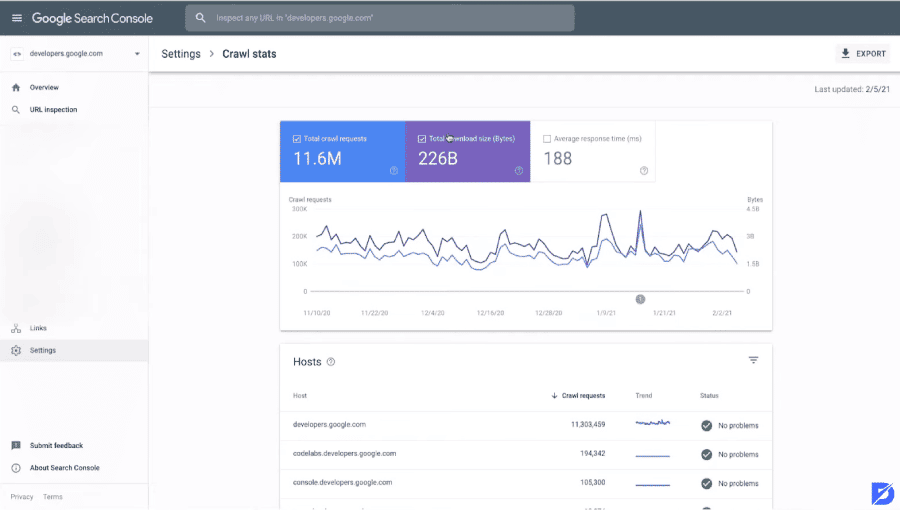
Check Out Crawling Problems
One of the most important factors consuming your crawl budget is having pages with crawl errors on your website. First of all, crawl errors slow down Googlebot’s crawling speed according to their size. In other words, the time Googlebot will spend crawling your website will also consume your crawl budget. The more time he spends crawling your website, the more it will run out of your budget. Let’s explain this situation with examples.
It is the 5xx errors that slow down Googlebot the most while crawling a website. These errors are usually server-related issues. And they have a pretty high-volume effect, too. Therefore, you should detect whether there are web pages on your website that return such error codes. Then, resolve this issue. If you can’t solve it, make sure to mark them. So, at least you may ensure that Googlebot doesn’t waste time on the page that returns the 5xx error code.
Finally, we need to note that non-200 error codes can also waste your website’s crawl budget. These error codes are caused by fairly simple errors. Hence, they’re the most common error codes. Since the solutions are simple, you should solve them as soon as possible. Thus, you can prevent them from wasting your scanning budget simply.
How to Check Google Crawl Budget
Everyone wants to check their crawl budget, from sites with a few web pages to e-commerce platforms with thousands of pages. First of all, let me state that you can trust Google 100% in this regard. However, it is impossible not to wonder naturally. What is my website’s crawl budget? After all, this is an industry of billions of dollars every year with small and large businesses. Do not worry! You can easily learn the scanning budget of your business website. Thus, you may act in a more planned way to add new web pages.
Google is a platform that stands out with its transparency in everything. You can be sure of this by personally checking your website’s crawl budget.
To check your crawl budget, you need to follow these steps:
- You need a website crawler and a log file analyzer for this process.
- If you have them, then use log analysis with URL segmentation.
- Navigate to your website’s log files.
- Here, you may view the number of URLs that Google is crawling on your website each month. This figure represents your monthly scanning budget.
So, what are the benefits of checking your website’s crawl budget? By checking your website’s crawl budget first, you can find out if Google has indexed some of your web pages. Thus, you can request a crawl for your web pages that Google does not add to the index. Besides, checking your monthly crawl budget will also give you an idea of your scan budget for the coming months. Thus, you will be able to add your new web pages to your website in a planned manner in the future.
You may also want to read our How to Make Google Crawl And Index Your Web Site? article.
How to Understand How Your Crawl Budget Is Spent
That issue is important for you if you manage a website that needs serious adjustments to its crawl budget. Especially e-commerce platforms with thousands of web pages need to be able to use their scanning budgets efficiently. That is exactly why these platforms have to keep a close eye on how their crawl budget is spent each month. Here are the steps you need to follow for this:
- First, perform a full site crawl.
- Then, access your log files.
- Combine these two data.
- Now, segment that data by page type. Doing so will reveal that search engines crawl which sections of your website and with what frequency.
Examine the data from this process through a Crawl Venn Diagram. Thus, you can clearly reveal which search engine crawls which parts of your website. At the end of this process, you will reveal which search engine did not crawl which web pages on your website.
Google Crawl Budget, In Short
In this article, we have explained why Google sets a crawl budget for each website. Then, we talked about ways to use this Google budget efficiently. Besides, we have discussed the main situations that consume the Google site crawl budget. We hope this article will be able to help you manage your website’s crawl budget efficiently.
Frequently Asked Questions About
No, the Google Crawl Budget may vary each month for websites.
All you have to do is go to the GSC tool. Here, copy the URL of the website you want Google to crawl. Then, submit this URL by clicking the request crawl button.
Whenever someone says crawl budget, SEO is the first thing that should come to mind. Because when you run out of your crawl budget, Google will not crawl your newly added pages on your website. As a result, it will naturally not index these pages.
Lots of redirects and redirect chains will waste your website’s crawl budget.
Yes, it does. For this reason, do not forget to mark the web pages that you do not want Google to index so that Googlebot does not crawl it in vain.

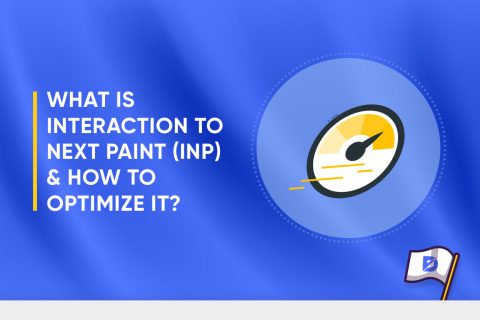
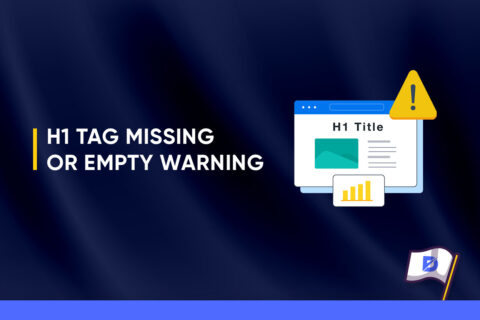
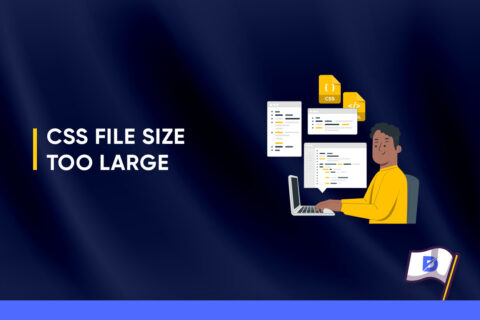

No comments to show.